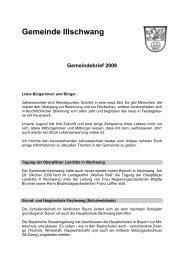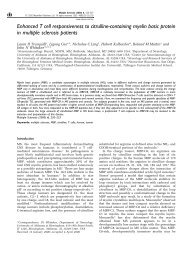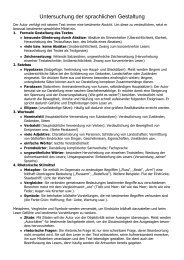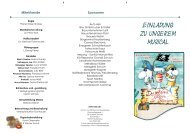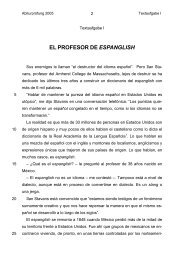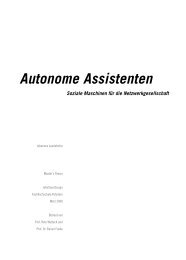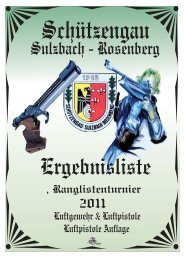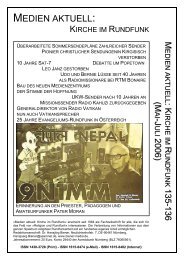Pathfinder Chronicles - Gazetteer - Asamnet
Pathfinder Chronicles - Gazetteer - Asamnet
Pathfinder Chronicles - Gazetteer - Asamnet
You also want an ePaper? Increase the reach of your titles
YUMPU automatically turns print PDFs into web optimized ePapers that Google loves.
<strong>Pathfinder</strong> <strong>Chronicles</strong><br />
8<br />
figures, wisdom, and grace, are often seen as perfect humans,<br />
creating an attraction many humans find impossible to<br />
resist. Elves appreciate humans’ vivacity, their lust for life,<br />
and their willingness to act at a moment’s notice. To elves,<br />
humans represent freedom, brashness, and excitement.<br />
While the most staid isolationist elves decry these factors as<br />
weaknesses of the human spirit, other elves find the traits<br />
irresistible. When elves and humans breed, half-elves are the<br />
inevitable result.<br />
The term “half-elf” is deceptive, for only a fraction of<br />
creatures so labeled come from the offspring of a human<br />
and elf parent. Others are many generations removed from<br />
the original coupling, yet exhibiting traits of one race or<br />
the other that ensure they never quite fit in either.<br />
Half-elves have no ancestral homeland and they<br />
seldom gather in groups composed exclusively of halfelves.<br />
Instead, they usually try to fit within either human<br />
or elf society. The half-elves generally thrive in human<br />
communities, where they frequently become artists,<br />
bards, or entertainers. Despite this warm welcome, many<br />
half-elves avoid mixing with their human cousins, for<br />
foremost among the racial gifts granted to them by their<br />
elven progenitors is a long natural life. Half-elves often<br />
survive 150 years or more, and must watch as three or<br />
more generations of their human friends wither and die<br />
before their eyes. The older a half-elf grows, the more<br />
likely he is to be overcome by melancholy and nostalgia,<br />
speaking wistfully of lost friends from simpler times.<br />
Many half-elves avoid this sad fate by seeking succor in<br />
full-elven communities, where they are the short-lived<br />
ones. Elves look upon their half-human spawn with an<br />
equal measure of pride and pity, and the elves’ natural<br />
haughtiness and self-centered natures ensure<br />
that half-elves are truly outsiders no matter<br />
where they dwell.<br />
Half-elves generally look like attractive<br />
humans with slightly pointed ears. They<br />
stand about a half-head taller than<br />
humans and rarely put on unseemly<br />
weight no matter what they feed themselves. Those with<br />
stronger elven traits are more likely to be viewed as<br />
outsiders by humans, who nonetheless remain strangely<br />
fascinated by them. Half-elves whose looks favor their<br />
human side tend to have a difficult time in elven society,<br />
with conservative elder elves subtly pushing them to<br />
discover their human heritage by exploring the world<br />
at large (and thus abandoning the pure elf community).<br />
Half-elven skin tones usually take on the hue of the<br />
human parent.<br />
Adventuring half-elves tend to be well traveled, with<br />
extensive networks of contacts picked up during their<br />
long lives among both humans and elves. Rather than<br />
tending toward a particular class or role within a party,<br />
half-elves are most often jacks-of-all-trades with a wide<br />
variety of skills and abilities. They make for trustworthy,<br />
dependable companions, and while they don’t quite fit<br />
into the societies of either parent race, they feel most<br />
at home on the road and are well suited for a life of<br />
exploration and excitement.<br />
Half-orcs<br />
Everybody hates half-orcs. In human society, they represent<br />
an evolutionary step backward, a repulsive mix of two lines<br />
that should not cross. At best, most humans pity halforcs<br />
as the unfortunate product of subhuman breeding,<br />
unwanted progeny born of violence or perversion. Orcs<br />
consider the half-breeds among them the thinking spoils<br />
of past victories, weaker cousins cursed with the softness<br />
of inferior stock. Either way, their inner conf licts often<br />
urge many half-orcs to seek genuine conf lict as guards,<br />
goons, gladiators, or adventurers. For while both orcs and<br />
humans debate whether or not the half-breeds truly belong<br />
to their races, no one questions their inherent ferocity and<br />
value in a fight.<br />
Half-orcs have existed in Golarion since the first battles<br />
between orcs and humans in the dying days of the Age<br />
of Darkness, when the Skyquest of the ancient dwarves<br />
pushed the brutal orcs from their subterranean homes to<br />
Garundi<br />
An ancient race of dark-skinned humans with no known ties to the Azlanti culture dominates<br />
Garund, the massive continent south of the Inner Sea. They emerged from the southern extremes of<br />
the continent in distant antiquity, and the deep black Garundi complexion common in nations like<br />
Geb is thought to represent the purest strain of this great and noble race. In northern nations like<br />
Thuvia, where Avistani and Keleshite blood f lows more strongly, a Garundi’s tone ranges from<br />
light brown to the deep red of Osirion’s ruling caste. Garundi often bear high cheekbones and<br />
prematurely white hair. They commonly speak Osiriani, although countless dialects abound.<br />
The Garundi are most commonly found on the east side of Garund, and spread from its<br />
northern reaches, at Osirion, south through Geb and beyond. Some Garundi migrated<br />
across the continent to settle the western coast as well, but they are vastly outnumbered<br />
there by the Mwangi, with whom they infrequently interbreed.



